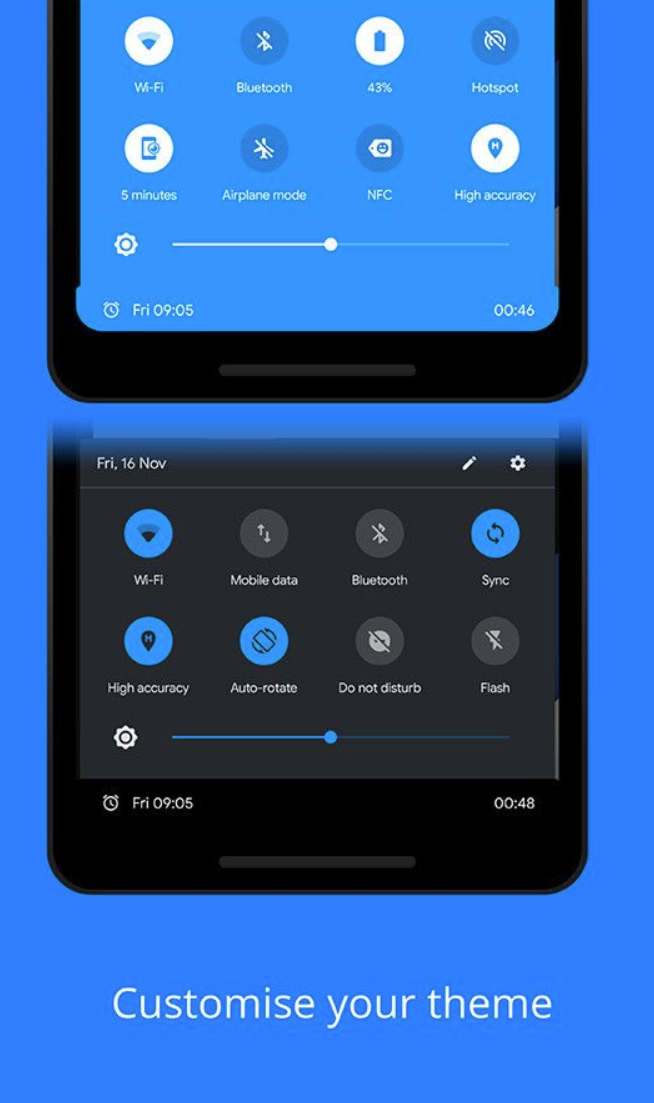


Eventually, he says the design will roll out across "the web, Chrome OS, Wearables, smart displays, and all of Google's products." At I/O, Duarte said Material You is coming to Pixel devices and "all your favorite Google Apps" first. The new design was introduced at Google I/O by Google's VP of Design, Matias Duarte, and while Duarte started at Android, he's now in charge of Google's overarching "Design" division.

Material You also isn't just for Android. Hopefully smaller apps adopt the feature, though. Would Facebook ever allow a green Facebook app? Would Spotify ever allow a blue Spotify app? I don't think so. Google said it was reacting to feedback that developers "didn't always see Material Design as flexible enough" and that "products from different brands looked too similar." Material You turns over color control to users, though, and I can't imagine that many big brands, which rely a lot on colors for branding, will be onboard. Google has the luxury of not caring too much about other branding on Android, and Material You once again falls into Google-centric habits. When Google rolled out Material Design 2 in Android 9, it added considerably more customizability at the behest of other brands. The Calculator, Clock, keyboard, Gmail, Chrome, Play Store, YouTube Music, Google Calendar, Drive, Keep, Files, and more all pick up on the dynamic colors. Unlike the glacially slow rollout of dark mode across Google's app ecosystem, a number of Google apps already support Material You. Apps can plug into the Material You color-changing palettes, too, so even Gmail and the Play Store can be color-coordinated with your wallpaper. So pick a primarily red wallpaper, and you'll get shades of red all over Android. Material You isn't just a set of design principles it's also an algorithm-powered color system (codenamed "Monet") that looks at your home-screen wallpaper and generates a palette of colors for the buttons, backgrounds, and text of the entire OS. This is the next generation of Material Design, and it's automatically color-coordinated in a way no other OS has been before. The lack of color paved the way for a dark mode in 2019's Android 10, which allowed for an easy change from all white to all dark.įor Android 12, Google is bringing back the color it stripped out. Google transitioned to Material Design 2 in 2018 with Android 9, and while that brought plenty of color customization for brands, Google went to an all-white theme that was almost completely devoid of color. AFAIK the LiveDisplay option is available on LineageOS based ROMs, I don’t know for the others.The first thing you'll notice when you boot up Android 12 is the new design language, which Google calls "Material You." Google has previously resisted giving version numbers to its Material Design styles, but with some documentation calling this " Material Design 3," the history is clear. Google introduced the first "Material Design" in Android 5.0, which brought bold colors and white card backgrounds to Android (and to the rest of Google). So I’m posting this here in case some other people hadn’t thought about it and actually find it useful (I haven’t found it anywhere else). A bit longer than other methods, but good enough for me. So I now have a settings shortcut to here, and it takes me 10 seconds each time I want to reduce the minimum brightness. I tried and… it works, and this time everywhere on the screen! It doesn’t really reduce the screen brightness itself, but sets a darker overlay on the screen, but I believe I can’t have better. And I thought, if I reduce all colours, then it will reduce the whole display brightness. One day I was playing with the settings of my phone 17.1), I discovered you could balance the colours of the phone in the LiveDisplay option (well, I already knew, but I never found this useful). Though these apps would not be able to reduce the brightness of the status bar, quick settings and device settings, and if I wanted this I would need a paid app from the play store, which I wanted to avoid. I have tried different things, of which different apps that would reduce the brightness on the screen. I guess I’m not the only one finding the LCD screen of the Fairphone 2 too bright in the dark, and I guess the one of the Fairphone 3 as well.


 0 kommentar(er)
0 kommentar(er)
